Exploitation and Predation
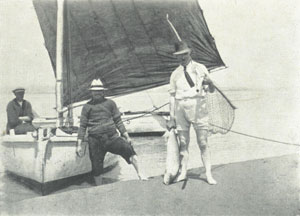
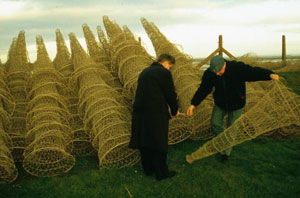
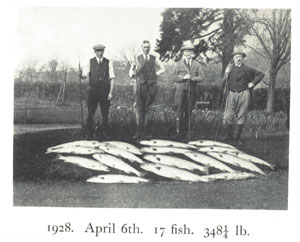
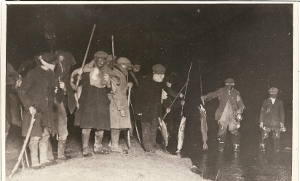
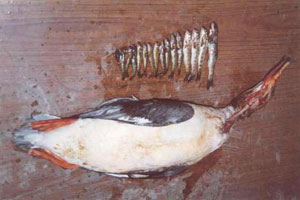
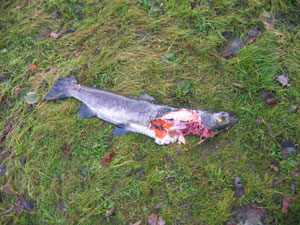
Consider the plight of a returning Wye or Usk salmon before 2000: those that were fortunate enough to escape capture on their feeding grounds had to run a gauntlet of drift nets off the Irish coast before facing our own barrage of putchers and nets in the Severn estuary. Once in the river, heavily manned rod fisheries using every known type of bait, fly and spinner awaited them. That's just the legal fishing. The river, at various times, was a haven to poachers of two types: the fast, efficient nocturnal netter operating on the lower rivers and the more 'traditional' lamp and gaff man taking fish from the spawning tributaries. It hardly needs saying that leaving more fish to spawn would increase the number fish for future generations. However, this only holds true when fish numbers fall below a certain level. This threshold is termed the 'Conservation Target'. However, if adult fish numbers exceed this target that number may, by and large, be safely taken without fear of reducing fish returning in future generations since only a core of spawning adults is required.
Losses take place at all stages of the salmon's life. Starting with the eggs laid in gravel: these can be lost through wash outs - high water events shifting gravels or drying out in extreme cold and frosty weather, poisoned by acid flushes or sheep dips, or even lost though gravel excavation. When the eggs hatch into alevins, it is crucial that food is available when their yoke sac runs out and that suitable refuge from predators - mainly other fish - is available under suitable sized stones with ideal flows and depths of clean water. There are losses at this stage (see habitat degradation) but this need not necessarily reduce final smolt numbers.
After a year, fry usually become parr when they ferociously compete with one another for the best and safest sites. Their final number will depend on the quality of habitat and food availability and in any one year the capacity of a river system is finite in respect of these factors. One effect of warmer river conditions is that the growing season has extended to such an extent that many fry are large enough to turn into smolts and migrate to sea after only one year in the river.
Our aim is to improve juvenile habitat and hence increase the number of fish a stream can support. Losses at the fry and parr stages are replaced in a healthy population of salmon, but not when numbers are below maximum capacity. Losses at the smolt stage are not replaced. Man and other predators at sea will reduce the numbers that finally return to the river either one, two or three years later (even four years for the monster Wye fish).
The upshot of this complex cycle is that there are stages of a salmon's lifecycle where we can make a difference and others where we can't. Please see salmon conservation for details of the actions we have taken.
Spawning and Management Targets
A Conservation Target is the amount (expressed as a number of salmon eggs) needed to sustainably populate a river. The number of adult salmon required to achieve this is calculated based on a known average fish size for the river, along with estimated survival rates. This is then compared to an estimate of the annual salmon run, based on the rod catch returns. At 100% there is no surplus for exploitation but the run could be said to be the minimum needed to keep the population sustainable.
A Management Target anticipates that more fish are needed to run an economic fishery. The situation on the Wye is that the salmon spawning target has hovered between 19% and 60% (CEFAS: Annual assessment of salmon stocks and fisheries in England and Wales). The Usk, after failing '95 - '97, has reached its target in subsequent years, but has fallen back in 2009 to just below target.
A significant criticism of the whole management process is that in England and Wales, fishery laws are too rigid to be altered for short term needs and as a consequence often don't get changed until stocks are far too low. Net Limitation Orders occur only once a decade and any reduction in exploitation is as a result of a licensee giving up his licence voluntarily. Rod fishing byelaws are similarly too slow to take into account prevailing stock levels.
Predation
Exploitation of fish is only part of the equation. Predation by birds and mammals also contributes greatly to the problem of depleted salmon stock.
Thirty years ago, there were no goosanders on the Wye. According to the 1999 MAFF survey up to 98% of the salmon parr produced on the Upper Wye are eaten by goosanders. Additionally, cormorants are seen in groups of up to 55, eating 2 - 3kg of fish each per day. More recently, the increase in otter numbers has resulted in quite significant mortalities of unspawned fish especially where they are held up at falls. The effects of these natural predators would not be so marked on a salmon stock at former high levels but are likely to impact significantly when stocks are low and trying to recover, as on the Wye today. Predation has a more significant effect on low density populations.
